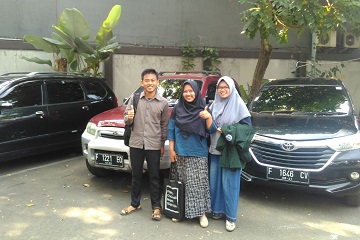IPB Students Criticize the Effectiveness of E-Toll Card Policy

Regulation of the Minister of Public Works and Housing of the Republic of Indonesia Number 16 / PRT / M / 2017 on Non-Tariff Transactions on Toll Road determines the change of toll payment transaction system to be non-cash. This regulation comes into effect in October 2017, where toll road users must make toll payments using electronic money or e-toll cards. This also applies to the Jakarta-Bogor-Ciawi (Jagorawi) toll road, which is the third most populous toll road in Indonesia in 2017.
The policy is implemented with the aim of improving the service of toll payment transactions for toll road users that are effective, efficient, safe and convenient, and reduce operating costs. In addition, the use of e-toll cards is done to reduce congestion in the queue and one step of modernization in an effort to speed up payment of tolls.
Some facts due to the policy that is often encountered today is the pattern of people who are not accustomed to using e-toll cards as a means of payment of tolls and still many obstacles in the provision of facilities. The e-toll card policy aimed at reducing or streamlining toll payments in less than 4 seconds and improving toll payment transaction services has not fully satisfied toll road users.
This created anxiety for a student team of three students from the Department of Management, Faculty of Economics and Management, Bogor Agricultural University (FEM Management IPB). They are Siti Mardiah, M. Ainun Na'im, and Ade Dwi Aryani. They examined the effectiveness of government-issued policies regarding the use of e-toll cards.
This research is written in the Student Creativity Week of Humanities Social Research (PKM PSH) under the title "Effectiveness of E-Toll Card Usage Policy Based on Jagorawi Toll Road Customer Satisfaction Level with Servqual Approach" under the guidance of Dr. Muhammad Findi, SE, ME.
"Many respondents admitted that they are still constrained in making Jagorawi toll payment using e-toll cards. For example an error engine that slows down payment time. In addition, users also find it difficult to know the balance of e-toll. Often users run out of balances that cause the queue to accumulate because the driver must go down and borrow to the car in the back queue, "said team leader, Siti Mardiah.
Another problem that respondents mostly complain about is the availability of difficulty charging places along the toll roads. Charging balance is usually in the nearest rest area, but the amount is currently limited.
This is one of the focus of our research is the problem most often complained of by respondents, namely complaints respondents about the performance of the machine that is often error. Thus, the respondent must attach the e-toll card to the reader machine repeatedly until it is finally read and the door will open. "The analysis we use is the Analysis of IPA (Important and Performance Analysis). This analysis is used to analyze the level of satisfaction of consumers in terms of importance and performance. The attributes we use refer to the service and quality approach (Servqual). Then we compare how the performance and expectations of consumers of this policy. Less satisfied and quite satisfied or have not reached satisfaction for consumers, "said Siti Mardiah.
The purpose of this study is to determine the effectiveness of the use of e-toll cards. Thus, the results obtained from this analysis can be used to formulate appropriate solutions in addressing the issue of enactment of this e-toll card policy. (jhn)



